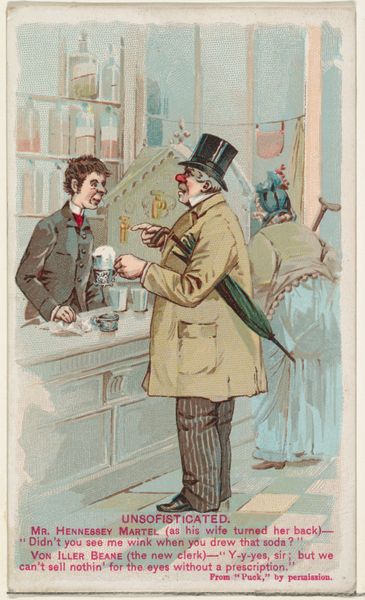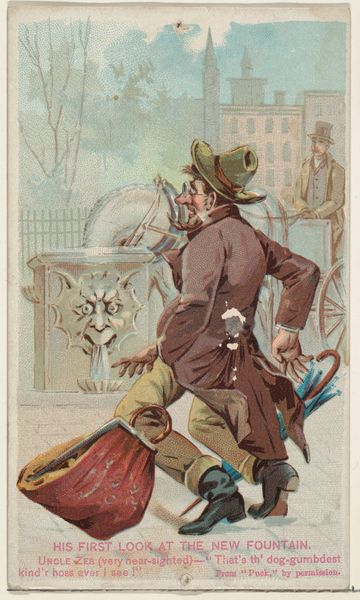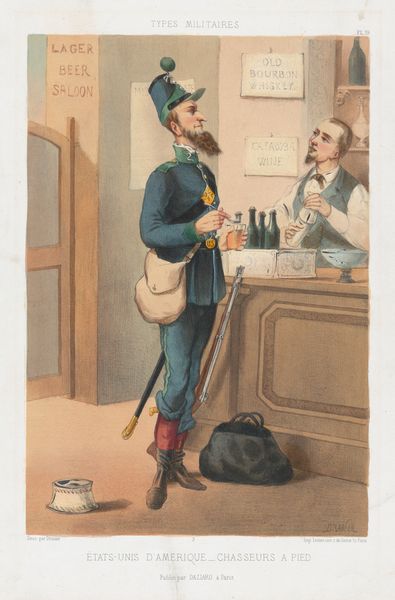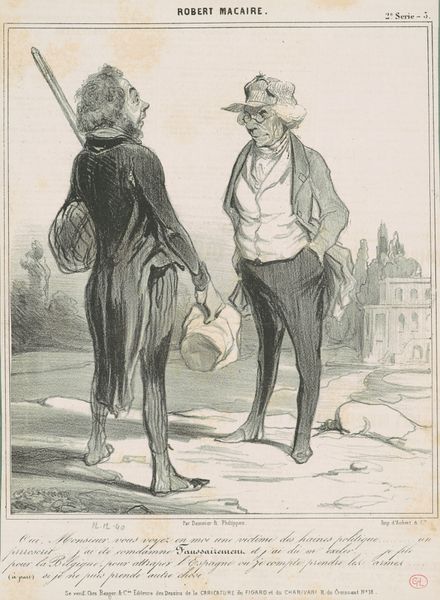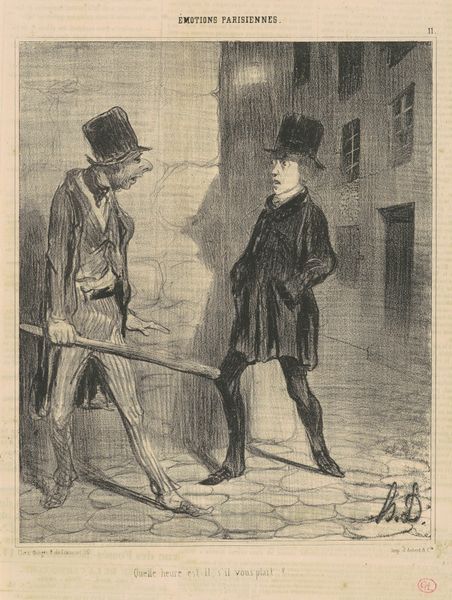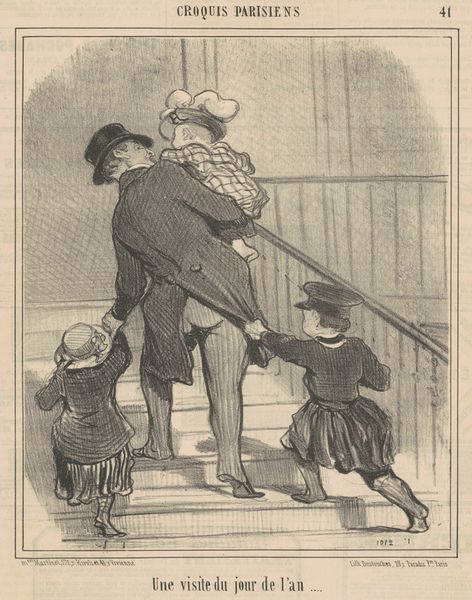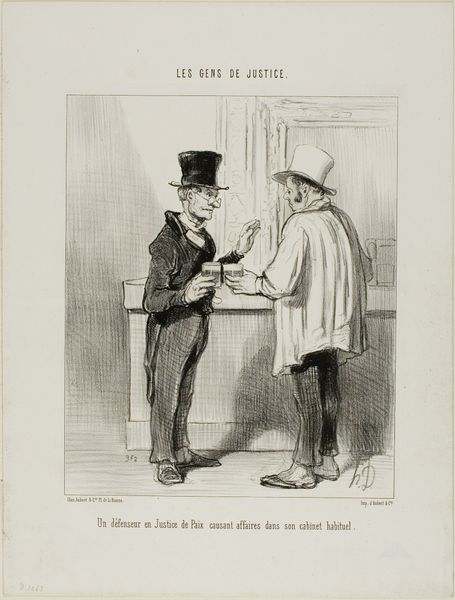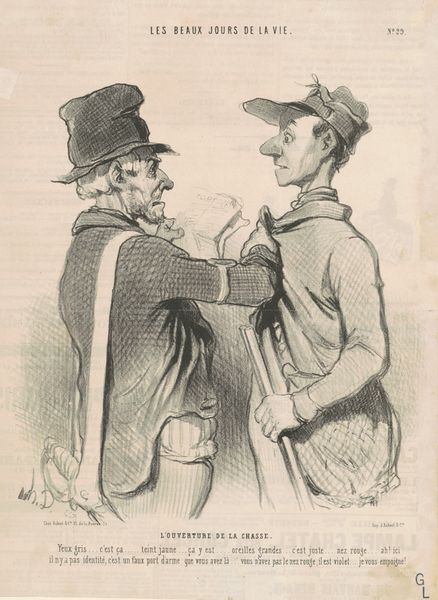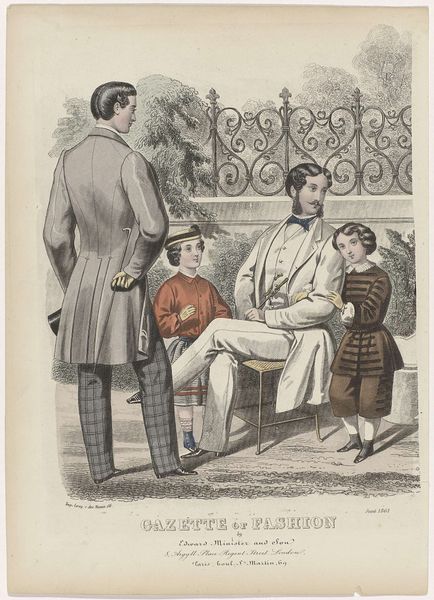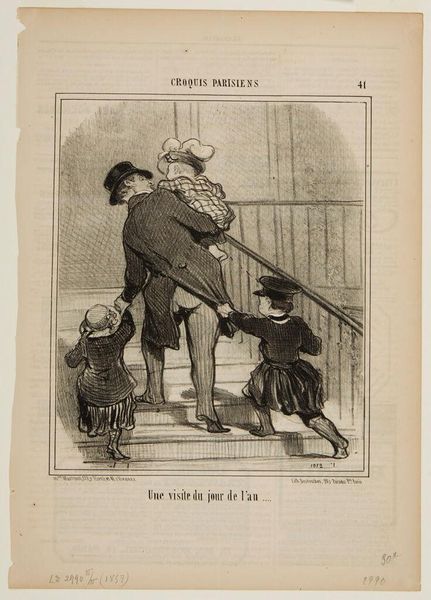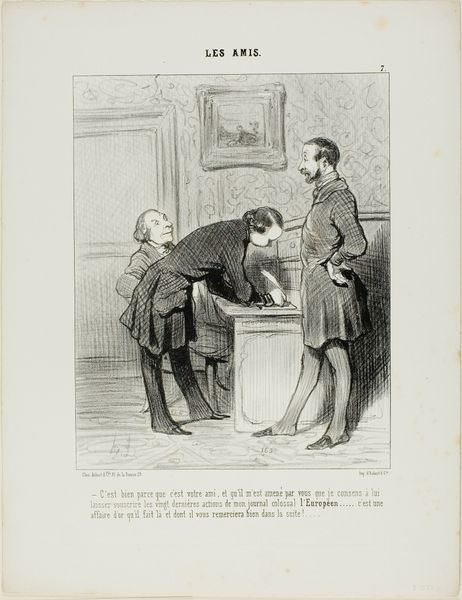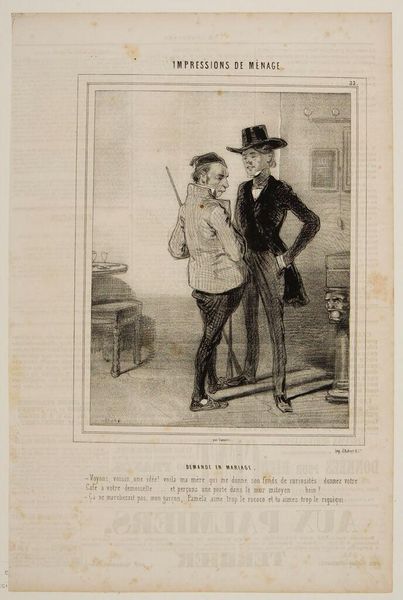
In the Nature of a Privilege, from the Snapshots from "Puck" series (N128) issued by Duke Sons & Co. to promote Honest Long Cut Tobacco 1888
0:00
0:00
drawing, coloured-pencil, print
#
drawing
#
coloured-pencil
# print
#
caricature
#
caricature
#
coloured pencil
#
19th century
#
men
#
genre-painting
Dimensions: Sheet: 4 3/16 × 2 1/2 in. (10.6 × 6.4 cm)
Copyright: Public Domain
Editor: So, this is "In the Nature of a Privilege," a print using colored pencils, dating from 1888 by W. Duke, Sons & Co. The scene is pretty straightforward; a hotel lobby, and there’s a humorous exchange happening. What's your read on this piece? Curator: Well, beyond the surface, I find it interesting to examine this print as a product of its time, both in terms of material and social function. It’s an advertisement for tobacco, which speaks volumes about consumer culture and the normalization of certain products through art. Editor: An advertisement? I missed that completely! How does the tobacco connection change our perception? Curator: It shifts the focus. What does it mean to elevate advertising to an art form? The colored pencil, a readily available material, and the printing process enabled mass production and wide distribution. We have to ask, how did that influence societal values of art at the time? Also, note the explicit focus on labour; we have the hotel clerk, the bellhop and the patron, the means of production here can open dialogue around social status. Editor: That's fascinating. So, the seemingly simple scene becomes an artifact loaded with information about labor and consumption... Curator: Exactly. The visual pun – a "privilege" being shown to room 13 - disguises an underlying commentary on commercial exchange and class relations being promoted through, and inextricably bound with, commodity culture. Were cheap colour prints influencing the public's access and perception of "high" art at the time? Editor: I see it now! I came in thinking it was just a funny snapshot, but I’m leaving with questions about consumerism, class, and how they intertwine with art's production and dissemination. Curator: And that, precisely, is the enduring power of art when seen through a materialist lens: its ability to illuminate the hidden infrastructure of our social reality.
Comments
No comments
Be the first to comment and join the conversation on the ultimate creative platform.

